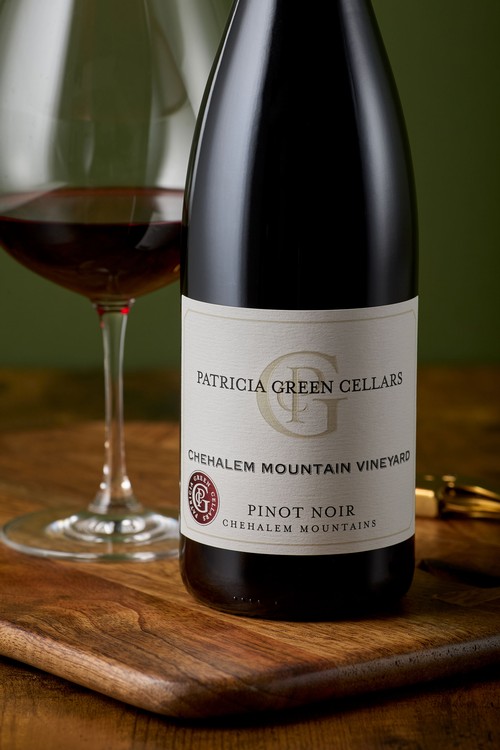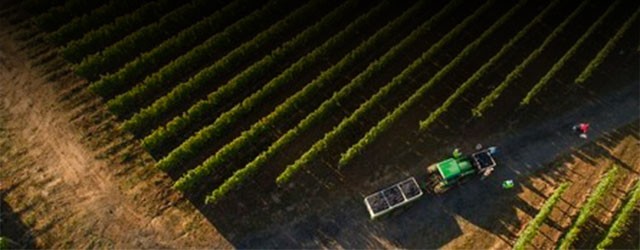2023 Chehalem Mountain Vineyard Pinot Noir
95 Points, JD

Site History: This is the vineyard that Dick Erath planted when he originally began growing grapes and making wine in 1968. While the vast majority of the tiny industry at the time was located in the Dundee Hills, Dick saw the potential for grape growing in the marine soils, lower elevations and slightly cooler temperatures out in what is now the Ribbon Ridge/Chehalem Mountain AVAs area. Dick was truly ahead of his time as the first vineyard planted in the Ribbon Ridge AVA (Chehalem Mountain Vineyard is on the east side of Dopp Rd., the west side of Dopp Rd. is in Ribbon Ridge while the east side is Chehalem Mountain) did not occur until a full fourteen years later!
Site Characteristics: Chehalem Mountain Vineyard is a lower lying hillside that juts up quickly from Dopp Rd. which traverses the small valley that divides the AVAs. The vineyard slopes mostly lightly from the Northeast corner down to the Southwest corner with undulations and some steeper and flatter parts running through it making it a fairly diverse spot. The soil is of the Willakenzie series which is all marine sedimentary. The top soil is dry and dusty with no rocks. The subsoil is a mixture of shale, sandstone and clay with the former two found at the higher portions and the latter in the lower parts. The vineyard’s defining characteristic likely comes from the large hill directly to the west dividing from the Ribbon Ridge AVA which makes it warmer than most vineyards in that AVA and less windy than many of the “inner” Chehalem Mountain AVA sites to its east.
PGC Blocks: This is the most diverse vineyard we purchase fruit from in terms of clonal makeup, which is a defining aspect of this bottling. Below are the sections that we receive:
Calera Clone: .85 acres. 2010 planting. California heritage clone with an unusual growing pattern that best suits a four fruiting cane trellising system. Clusters are extremely small and fruit is very intense.
Pommard Clone: 1.61 acres. 2001 planting. Tried and true clone. Lowest portion of the vineyard near Dopp Rd.
Wadnesvil Clone: 2.01 acres. 2006 planting. Wheelhouse clone for the winery. Lower portion isolated from all the other blocks.
Farming Practices: Chehalem Mountain Vineyard was recently purchased by Cooper Mountain Vineyard. They are moving from sustainable farming to biodynamic principles with a stop in between of normal organic level farming which is where we are at right now. Standard every other row tilling. Heavier cultivation in the short term to properly aerate chunky soil. All Patricia Green Cellars sites are dry farmed.
Picking Dates, Tonnages, Tons/Acre: September 11: Calera 3.0155 tons (3.55 tpa); September 13: Wadensvil 7.407 tons (3.70 tpa); September 19: Pommard 4.3975 tons (2.73 tpa),
Vinification: Multiple different approaches:
Destemmed: Calera Clone and Pommard Clone (2 and 3 fermenters respectively)
40% Whole Cluster: Wadensvil (4 fermenters and inclusion in this wine of 5 total barrels)
Winemaking: Fermentations were managed by a combination of pumpovers early in the process and exclusively prior to fermentation beginning as well as pigeages to ensure gentle handling, extraction and delicate tannin construction. Cold soaks were generally 3-4 days with the exception of the Wadensvil which was between 6-7 days. Full fermentation from beginning to pressing was 16-17 days except for Wadensvil which was 20-21 days. 48-72 hour settling prior to being racked to barrel. All wines on full lees until assemblage for bottling. Bottled with a light filtration for clarity purposes right before bottling.
Barrels: This 35-barrel bottling consists largely of neutral barrels (62%) with the exception of 6 new barrels (17%), 4 once-filled barrels (12%) and 3 twice-filled (9%). The wine was in barrel until late June and bottled in late July. Bottling consists of:
Calera Clone: 8 barrels
Pommard: 12 barrels
Wadensvil: 15 barrels
Notes: This is the third and last bottling of the Chehalem Mountain Vineyard Pinot Noir bottling. This has been a fun foray into a site that has allowed us to work with some California clones of Pinot Noir. This has given us an interesting spin on our normal style of Pinot Noir since we are now an area that can ripen clones that would have been foolhardy even just a decade ago. Combined with growing in marine soils and the isolated valley nature of this site it all adds up to a unique, dynamic and intense without being too powerful sort of Pinot Noir. This is richly colored, highly aromatic and abounding with darker/bluer sort of fruit notes and finishing with an excellent structural composition that reins everything allowing for it to be balanced and delicious in the short term while giving appropriate framing for, most certainly, medium term aging and quite possibly rewarding aging well into a second decade in bottle. This finished with a TA of 5.4, a pH of 3.61 and was bottled with under 30 ppm free SO2 and less than 85 ppm total SO2.
Tasting Note: Please be aware that I am loathe to write tasting notes on our wines. Each person has an individual palate and therefore unique experiences with every wine. Also, what a person has tasted in their life and what they enjoy informs them on what a wine is like. If I tell you a wine tastes like cherries and you either have never had a cherry or don’t like cherries what I am saying is irrelevant information. That being said I have been asked to include my thoughts on each wine (since we have so many).
The 2023 Chehalem Mountain Vineyard Pinot Noir may be the last one but it delivers incredible quality and value on its way out the door. The combination of the sweetness, earthiness and peppery notes make for a wine utterly unique in our lineup. There is a lot to dig into with this wine. It has a lushness that has been its hallmark in its short stint with Patricia Green Cellars that separates it from our other Ribbon Ridge/inner-Chehalem Mountain AVA sites. This is remarkably drinkable at a young age for a marine soil site of such history and pedigree. If you’re looking for a single vineyard 2023 PGC wine to either be a cellar defender or simply a wine to open with a good meal this is a bottle that will serve you well.

